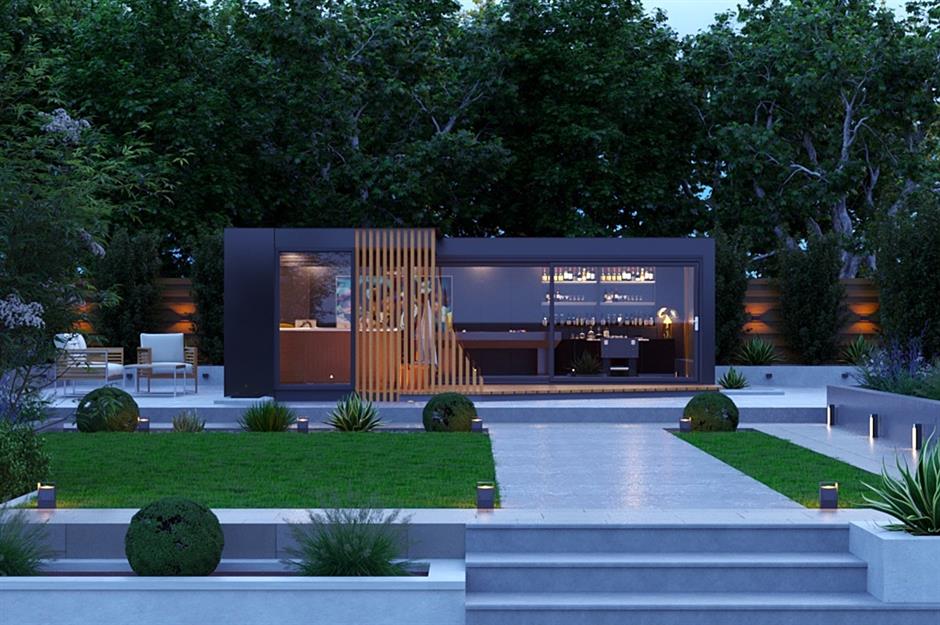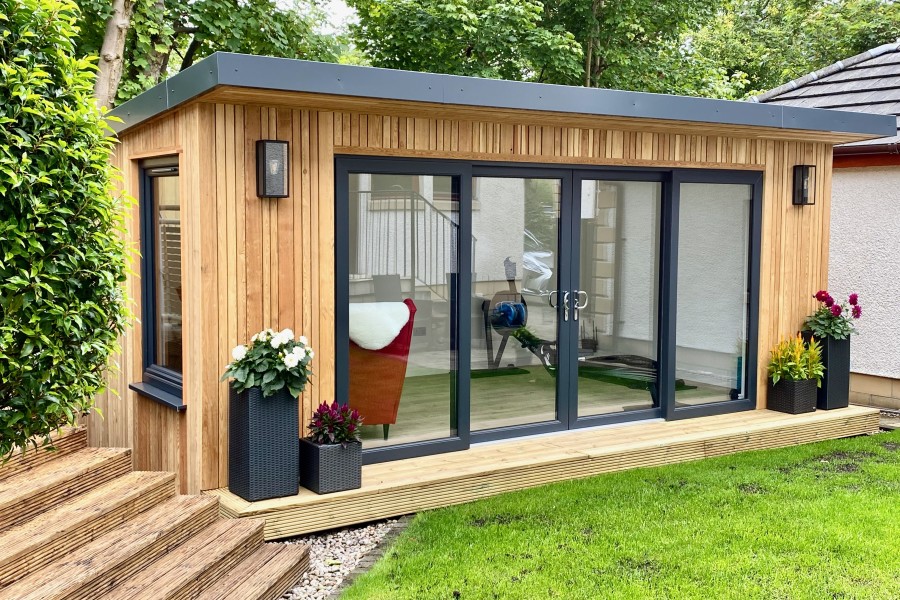Good Reasons On Planning Permission On Garden Extension
Wiki Article
How Big Is A Garden Space?
Specific size restrictions are often utilized to determine if you require planning permission when making conservatories, garden rooms or outhouses. Here's a summary of commonly used size-related requirements you have to take into consideration when seeking permission to plan.
Planning permission is normally required for detached outbuildings when its total area, including any outbuildings already built as well as the space around the house exceeds 50%.
Height Restrictions:
Constructions with a single story: The maximum eaves must not exceed 2,5 meters. For roofs with two pitches, the height should not exceed 4 meters.
Buildings less than 2 meters away from the property's boundary should not exceed 2.5 meters in height.
Floor Area:
Even the planning approval isn't needed, structures that have a greater floor area than 30 square metres may need to be approved by the building regulations.
Proximity to boundaries
Planning permission is typically required for buildings that are within 2 metres of the property's boundary.
Building Use
There is no strict size restriction but the purpose for which you intend to use the garden room may impact the necessity for permission to plan. If the building's intended use is for residential use or commercial space, approval for planning is likely to be required.
Permitted Development Rights:
Permitted Development Rights permit development rights that permit certain kinds of work without a complete planning request, have limitations on the size and conditions. These rights differ depending on whether the property is located within an area that is protected or subject to other restrictions.
Conservatories and Extensions
For a rear addition with a single story the maximum height is 3 or 4 meters, depending on the kind of house it is a semi-detached or a terraced residence. The Neighbour Consultation Scheme allows extensions of 8 or 6 meters, or respectively when certain conditions are met.
The rear extension of a single-story house must not be more than 4 metres.
Side Extensions
For side extensions, the width and height must not exceed four meters.
Volume Restrictions:
In some areas (like conservation areas or Areas of Outstanding Natural Beauty), any additional building which increases the size of the original house by more than 10 percent or 50 cubic metres (whichever is more) might require planning permission.
Front Extensions:
Planning permission will be required for any extensions that extend beyond the front of the house.
Contact your local authorities as the rules may vary according to local councils and the conditions of your property. Even if no planning permit is required, a building permit in accordance with the building regulations might still be needed for structural integrity or safety reasons. Follow the top rated garden room extension for website tips including outhouses, do i need planning permission for a garden room with toilet, garden rooms hertfordshire, copyright garden office, Tring garden rooms, garden room vs extension, outhouse builders, what size garden room without planning permission, ground screws vs concrete base, garden out house and more.

What Is The Permission For Planning Required For Garden Rooms Etc.?
Building gardenrooms, conservatories and outhouses and extensions or gardens on the grounds of listed buildings requires particular considerations. Stricter regulations also apply. These are the main factors to consider when planning permissions are required for such projects. The Building Consent for Listed Buildings
Generally speaking, every extension, alteration, or construction project that is carried out within the perimeter of a listed building must be approved by approved listed building permits in addition to planning permission. This is due to the fact that any modifications could affect the character or special interest of a listed structure.
Impact on historical Character
Any new construction or extension that could alter the character or appearance of the historic building or the listed structure or its surrounding areas, require planning permission. This includes garden structures and outbuildings.
Design and Materials
The new structure's design and materials should be reflective of the architectural and historical significance of the existing structure. It could require the use and design of materials from the past. It will also require the approval of a planner.
The building is close to the listed:
It is essential to take into consideration the impacts on any future structures constructed near to the historic building. To ensure that they don't affect the appearance of the building it is necessary to obtain planning permission.
Size and Scale
The scale and size should be proportional to the listed structure. The bigger structures will require more precise evaluation and approval for planning.
The Location of the Property:
The location of new structures (whether they are erected in front, at the side or at the rear of an existing building) may affect the requirement for approval of the plan. Locations that are noticeable or have an important impact on the building's key views are usually the subject of a thorough examination.
Internal Changes
Even if it is a detached structure, any interior changes to a listed structure (such as the construction of new entry points) need the permission to plan and the listed-building permit.
Conservation Area Overlap
The listed building must also be situated within Conservation Area. Planning permission is needed to ensure that both conservation zone and listed building regulations are adhered to.
Use of Buildings:
Planning permission is often needed based on the purpose of the garden room, or other outbuilding will have. The usage of a garden room or outbuilding that requires a significant change in the property, such as a residential apartment or commercial space is subject to greater scrutiny.
Structural Impact:
The listed building consent as well as permission for planning are required for any work that may impact the structure's integrity. This will ensure that older and new structures can be properly and seamlessly integrated.
Local Authority Guideline:
Local authorities often offer specific guidelines to listed buildings that outline the different types of construction as well as modifications that can be permitted. These guidelines are followed if you have planning permission.
Professional Assessments
Conservation specialists are usually required to perform detailed evaluations of proposals for works on properties that are listed. These assessments help determine the suitability of the proposed changes and offer an argument for the plan application.
In summary, planning permission and listed building permits are almost always required when constructing garden rooms, conservatories outhouses, garden offices or extensions that are part of the building that is listed. Talking to the local planning authority and heritage professionals early in the planning process is vital to ensure that the building is in compliance with all applicable laws and regulations, as well as to preserve the historical and architectural integrity of the building. Check out the most popular outhouse heater for more info including outhouses for garden, garden room heater, copyright outhouse, garden rooms in St Albans, garden office electrics, garden room heater, garden rooms, outhouse buildings, armoured cable for garden room, garden room permitted development and more.

What Planning Permissions Are Needed For Garden Rooms, Etc. In Relation To Utilities And Infrastructure
Utilities and infrastructure are important when planning to construct conservatories or garden spaces, as well as outhouses, garden offices, and extension. They can also impact whether planning permission is needed. Here are the most important aspects to take into consideration the water supply and drainage:
It is possible to obtain a planning permit when the structure is linked to the local water supply system or drainage system. The water authority in the area might have to evaluate the effects on the local water supply and the sewage system.
Gas connections and electric power:
If the construction requires connections to gas or electricity supplies, planning permission may be needed. For these connections, it is important to be in compliance with building codes and safety standards.
Utility Easements
Planning permission may be needed when the structure is located in an easement (areas which are specifically designated for infrastructure and utility lines). It could be necessary for the local utility company to be able to approve the construction of these areas.
Septic Tanks and Sewage Systems
It is important to obtain planning permission if you are installing a septic tank or sewer system on your property. This system should be in line with environmental and health regulations.
Drainage Surface Water Management and Surface Water Management
A planning permit may be required to tackle surface water runoff and drainage from the new structure. To prevent flooding and erosion, as well as water pollution, it could be necessary that you implement certain steps.
Access to Utilities for Construction
Planning permission might be required for temporary access to utilities like water, for example, during construction. Temporary connections must comply with safety and environmental standards.
Impact on local infrastructure:
To evaluate the impact on local infrastructure, such as roads, utilities, public services, etc., it is necessary to obtain a planning permit. Local authorities will determine whether existing infrastructure can accommodate a new development.
Waste Management & Recycling
The planning permission could include requirements regarding recycling and disposal of waste either during or following construction. To limit the environmental impact of construction, it's important to have adequate provisions for recycling and disposal.
Energy Efficiency & Renewable Energy
It may be necessary to get planning permission prior to installing energy-efficient devices or renewable sources of energy (such solar panels or heat pumps) in your new building. The compliance with building regulations as well as environmental standards is vital.
Telecommunications and Internet Connectivity
Planning permits are required for the construction of new structures that require Internet or telecommunications connections. Compliance with regulations and standards for the telecommunications infrastructure is vital.
Access to the Footpath and Road:
You might require planning permission to build new access roads, footpaths or other routes, or modify existing ones. The construction of roads and footpaths must be in compliance with the safety standards of all construction sites.
Public Transport Accessibility
If the structure is affecting accessibility to public transportation facilities (such as train stations or bus stops) the planning approval may be necessary. It is important to comply with the rules and regulations for public transport infrastructure.
In short, utilities and infrastructure elements are the most important factors in determining if permits are required to build extensions, garden rooms outhouses, gardens offices. It's essential to consult with your local planning authority prior to beginning the process of planning to ensure that the building is in compliance with all applicable laws and guidelines. Have a look at the top whats a garden room for website tips including garden rooms near me, ground screws vs concrete, garden office hertfordshire, copyright garden buildings, conservatories and garden rooms, composite garden office, outhouse building, do you need planning permission for a garden room, gym outhouse, outhouse garden and more.
